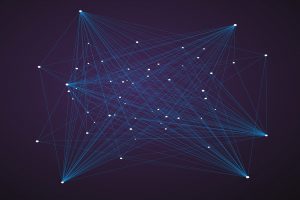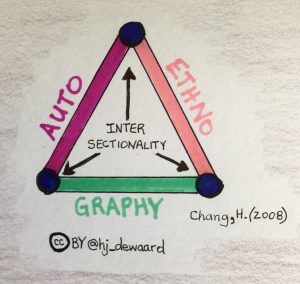Autoethnography
 This is a dip into autoethnography (AE) as it’s an area of interest where I’m seeking to gain understanding. I’ve just finished reading this particular article: Chang, H. (2008). Chapter 3: Autoethnography in H. Chang, Autoethnography as method. (pp. 43-57). Walnut Creek, CA: Left Coast Press.
This is a dip into autoethnography (AE) as it’s an area of interest where I’m seeking to gain understanding. I’ve just finished reading this particular article: Chang, H. (2008). Chapter 3: Autoethnography in H. Chang, Autoethnography as method. (pp. 43-57). Walnut Creek, CA: Left Coast Press.
This is the resulting four sentence summary for this article.
A long standing interest in anthropology as a research methodology has produced manifestations such as life histories, ethnographies and memories. Critique analyzes the divide between objective and subjective positions and methodologies. Before outlining an extensive array of autoethnographic (AE) labels, Chang defines AE as a combination of “cultural analysis and interpretation with narrative details” (p. 46) and outlines five conditions autoethnograpers should satisfy. The complexity of AE is supported by Ellis & Bochner’s (2000) triadic model, where varying degrees of focus are placed on research process (graphy), culture (ethno) and self (auto). Chang states that by balancing the benefits and challenges of AE research, social scientists can enhance “cross cultural understanding in a culturally diverse society” (p. 57).
As I was reading, I visualized this triadic model. Here is the graphic image.
In this article, several questions emerged.
Since the underlying intention for AE is cultural understanding as reflected through personal experiences, how will this apply to the current work I’m doing for my OEFellowship scholarly research?
As the usual research process for AE includes collecting data, analyzing data, interpreting data and it’s analysis, as well as report writing, how will this process unfold in the coming months with my work as an open educator and OEFellow? Do I have enough data, am I collecting the right data, or have I missed essential data collection since I haven’t collected everything, just key evidentiary elements to support the narrative?
Using Chang’s (2008) writing, how have I compromised the research at every level of my OEFellows investigation?
- field data collected through “participation, observation, interview, and document review”;
- data verification done through “triangulating sources and contents from multiple origins”;
- examining data to “decipher the cultural meanings of events, behaviours, and thoughts”;
- writing the story with “critical, analytical, and interpretive eyes to detect cultural undertones of what is recalled, observed, and told” (p. 49)
Is AE a research method (or methodology?) that could or would apply to the study of OER (open educational resources), OEM (open education movement) or OEP (open educational practices and pedagogies)?
Reference:
Chang, H. (2008). Chapter 3: Autoethnography in H. Chang, Autoethnography as method. (pp. 43-57). Walnut Creek, CA: Left Coast Press.

